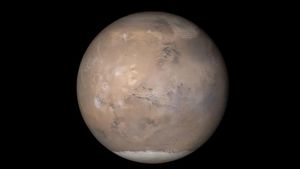JAKARTA - Physicists have discovered that ET (extra-terrestrial) can indeed contact their homes, and they also receive the communication well.
According to a new study, it is possible to send messages through interstellar space using quantum communication.
A team from the University of Edinburgh ran calculations on the movement of X-rays across the void of space to see if they would encounter any obstructions.
Quantum particles, such as photons of light, are fragile and can easily decompose if encountered by any kind of disturbance, such as from a gravitational field.
But it was determined that quanta could survive a journey of at least hundreds of thousands of light years, this being a much larger stretch of distance than the entire Milky Way galaxy.
Over the past few years, scientists around the world have been investigating this using quantum communications on Earth.
Quantum technology uses the effects of quantum physics, namely the properties of matter at the atomic and subatomic levels, for advances in communication.
Quantum communication systems are faster and more secure than regular networks because they use photons instead of computer code, which can be hacked.
It is hoped that this technology can provide 'unhackable' high-speed internet in the future.
However, the biggest obstacle to implementing quantum systems is how susceptible they are to 'decoherence'.
This occurs when a quantum particle loses some or all of its unique characteristics when it interacts with its environment.
Potential barriers include the gravitational fields of large planets or stars, cosmic dust, the solar wind, and the content of other particles present in the interstellar medium.
In a paper published last month in Physical Review D, the physicists describe their calculations that prove that quantum particles can be emitted over large interstellar distances.
They used astronomical data and mathematical models to describe the movement of X-rays between about a hundred relatively close exoplanets and Earth.
It was concluded that this distance would probably not present a particularly disturbing drag for quanta.
This is largely due to a 'cleaner' environment in space than on Earth, because the average density of matter is much less.
Therefore, the probability of a quantum particle being thrown off course as it travels through space is much lower.
"It is plausible that photon-mediated quantum communication could be made across interstellar distances, particularly for photons in the X-ray region below the electron mass," the researchers wrote in their research, also quoted by the Daily Mail.
According to the researchers, in addition to X-rays, they note that microwave photons and optical light are also feasible. The level of information that can be safely transferred using quanta at high speeds could make it a viable method of communication for other life forms.
There are currently no known objects naturally capable of sending quantum messages that could be mistaken for alien signals, the researchers claim.
But that would require a powerful quantum computer on Earth to crack any code, and we'd have to make assumptions about the encryption code.
Quanta is also still limited to only being able to travel at the speed of light, 186,282 miles per second, meaning messages still take years to travel between planets.
At this point it's just speculation, but research gives experts another sign of life to watch out for.
Quantum teleportation has also been suggested as a potential way to transmit quantum information emitted by extraterrestrial civilizations.
This is where the properties of a distant particle can be transferred to another across space, and require both classical and quantum signals.
Physicists write that extraterrestrial life may prefer this, as it 'could provide a better signature for detection', and any scientist looking for it should examine both.
They add that in principle, it should be possible to detect quantum signals coming from astrophysical bodies or even intelligent signals from extraterrestrial civilizations.
The English, Chinese, Japanese, Arabic, and French versions are automatically generated by the AI. So there may still be inaccuracies in translating, please always see Indonesian as our main language. (system supported by DigitalSiber.id)









